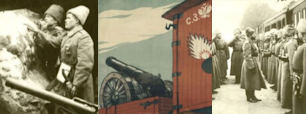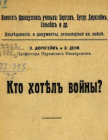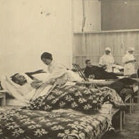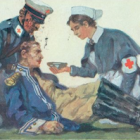World War I (1914-1918)

The year of 2014 marks the centenary of World War I - a new type of war, which had acquired the features that later were common for the armed conflicts of the 20th century. These are: inseparability of the rear from the front, the total mobilization of the economics for military needs, information warfare on a national scale. Land battles enriched the science of war with tactics of tank attacks. At the sea was first deployed a submarine warfare, with attacks against civilian ships. In fact, during the war a new kind of armed forces developed – the air force, which became a full-fledged means of warfare. The Russian Empire in that war was part of the military and political alliance with France and Britain, which opposed the central powers - Germany and Austria-Hungary. The war, initially seen by many contemporaries as the Second Patriotic war (by analogy with the war of 1812), fast enough contributed to the development of the crisis in all spheres of the state and society. The difficulties in supplying the army and the front revealed production base and poor infrastructure, especially the railway, unprepared to meet the needs of a large-scale war. The government's attempts to solve the growing difficulties led to the fabled phenomenon of "ministerial leapfrog," while cooperation between the government and private capital was not productive enough. Strong inflow of the rural population in the cities led not only to a crisis of supply, but also to the change of social image of the citizens. Series of defeats at the front contributed to the worsening of the situation in the country.
For the Russian State the Great War marked a border line of epochs, the transition from the estate monarchy to the socialist republic, accompanied by revolutionary upheavals and devastation of the Civil War. Political conjucture of the Soviet period had stamped the First World War with the term "imperialist", which in practice meant that it was considered mainly as a catalyst for the revolutionary events. The epithet of "the forgotten war" proliferated in recent years not only reflects a poor study of that period, but its actual fall-out from the historical memory of the nation.
The core of the collection is represented by research works, essays, official documents, archival materials (including a card index of war heroes), leaflets and fiction. Particular focus is on the memoirs and visual sources, reflecting Russia's participation in the First World War.
The collection includes over 1200 items.
The collection includes numerous materials from the collections of the N. A. Dobrolyubov Arkhangelsk Regional Scientific Library, the Belgorod State Research Library, the Library of Congress, the Library for Natural Sciences of the Russian Academy of Sciences, the Military Historical Museum of Artillery, Engineer and Signal Corps of the RF Ministry of Defense, the State Archives of the Russian Federation, the State Archives of Tyumen Region, Gosfilmofond of the Russian Federation, the State Socio-Political Library, State Public Historical Library, the Children's Museum of Postcards, the N. K. Krupskaya Moscow Regional State Research Library, the A. S. Pushkin Omsk State Regional Research Library, the A. M. Gorky Perm State Regional Library, the Russian State Library, the Russian State Archives of Film and Photo Documents, the Russian State Historical Archive, the Russian History Channel, the St. Petersburg State University, the St. Petersburg State Theater Library, the Central Naval Library, the Center for Information Technology and Systems of the Executive Branch.














